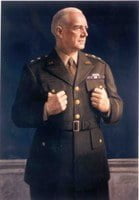On March 1, 1943, OSS Director William “Wild Bill” Donovan created the Counterintelligence Division in the Secret Intelligence Branch—the first centralized, national-level counterintelligence office in US intelligence history, and the predecessor of the CIA’s Counterintelligence Mission Center.
Before World War II, the US government did not have the level of military, intelligence, or colonial interests outside the Western Hemisphere that required a large-scale effort to protect clandestine operations.
Until then, security and counterintelligence operations had been undertaken as needed by the FBI, the Army’s G-2 branch, and the Office of Naval Intelligence.
Need-to-Know Culture

- ENIGMA machine
Early in WWII, the British began supplying the OSS with extensive information about foreign military, espionage, and sabotage activities, the most sensitive of which came from ULTRA—decrypted intercepts of German military messages sent with the Enigma machine.
Because of the volume of traffic and the overriding need for compartmentalization, the British insisted that the OSS set up a separate, extra-secure component to handle the material.
Accordingly, Donovan created the Counterintelligence Division in the Secret Intelligence Branch, which conducted espionage operations in war zones.
Formation of X-2
As the CI Division’s work grew along with the need for the OSS to build counterintelligence networks of its own, on June 15, 1943, Donovan reconfigured the CI Division as a branch-level office called X-2.

- OSS class on decoding and writing
In September, the main X-2 branch office moved from New York to Washington. By 1945, X-2 had amassed hundreds of thousands of files on foreign espionage and sabotage that included the identities of foreign agents and firms used as cover by hostile services.
Units within X-2 addressed specific CI functions.
A Watch List Unit monitored mail and written communications for names and cover names of enemy agents. An Insurance Unit monitored Axis intelligence operations carried out under insurance cover, and an Art Looting Investigation Unit tracked records of stolen art and jewelry as a means of tracking German officers.
In the field, X-2 operated its own communications channels and field bases separate from the rest of OSS, in cities such as London, Paris, Cairo, Istanbul, New Delhi, and Shanghai. In addition to its close interaction with the British, X-2 had clandestine liaison relationships with the services in liberated France, Belgium, Holland, Denmark, and Norway.
CI and James Angleton

- James Angleton
Processing the ULTRA intercepts and the inherent sensitivity of CI information gave X-2 a climate of intense security and secrecy that affected how CIA treated counterintelligence for nearly three decades.
X-2 had a formative influence on James Angleton, who became one of its most successful officers and Chief of the Agency’s Counterintelligence Staff from 1954 to 1974.
The X-2’s need-to-know culture and the exposure of several enemy double agents attuned Angleton to CI threats and the “strategic deception” practices of hostile services.
Creation of CIC:
Following Angleton’s dismissal in 1974 amid controversy and scandal, the CI Staff’s personnel, budget, and responsibilities were reduced significantly.
After the “Year of the Spy” in 1985, when several current or former US intelligence officers were exposed as working for foreign services, Congressional inquiries in the mid-1980s concluded that CIA and other Intelligence Community agencies did not give enough attention to CI and security.
In response, CIA in March 1988 created the Counterintelligence Center (CIC), which integrated CI throughout the Agency’s activities, including training, collection, dissemination of reports, analysis, and support to law enforcement. (In 2015, CIC became the Counterintelligence Mission Center).
Want to learn more?
Counterintelligence:
- Studies in Intelligence: The Anatomy of Counterintelligence
- OSS X-2 Division
- OSS Secret Intelligence Branch
- Tracking Nazi Gold: The OSS and Project SAFEHAVEN
People in Counterintelligence:
- OSS Director: William Donovan
- Legendary Spy Hunter: James Angleton
- The Enigma Machine and Alan Turning
- The Mystery of Jane Wallis Burrell
- Spy Catcher: Jeanne Vertefeuille
- To Catch a Spy: Ames Mole Hunt Team
- DCI Statement on the Ames Damage Assessment
Source: CIA Newsroom




